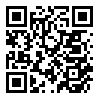Volume 14 -
mededj 2025, 14 - : 0-0 |
Back to browse issues page
Download citation:
BibTeX | RIS | EndNote | Medlars | ProCite | Reference Manager | RefWorks
Send citation to:



BibTeX | RIS | EndNote | Medlars | ProCite | Reference Manager | RefWorks
Send citation to:
Paryab S, Mehryar H, Dashtipor M, Vahedi H, Garkaz O. Investigating the Relationship Between Moral Intelligence and Some Demographic Factors in Medical Students of Shahroud University of Medical Sciences: A Descriptive Study. mededj 2025; 14
URL: http://mededj.ir/article-1-544-en.html
URL: http://mededj.ir/article-1-544-en.html
Department of Epidemiology, School of Public Health, Shahroud University of Medical Sciences, Shahroud, Iran.
Abstract: (845 Views)
Background and Objective: Today, academic knowledge and skills alone are not enough to provide quality health services. Despite the complexities of the healthcare environment, ethics is an inseparable part of healthcare decision-making, and ignoring it can have a negative impact on the quality of services provided and organizational health. This study was conducted to investigate the relationship between moral intelligence and some demographic factors in students of Shahroud University of Medical Sciences.
Methods: This descriptive-cross-sectional study was conducted on 101 medical interns of Shahrood University of Medical Sciences, who were included in the study through census method, in 2024. The data collection tool included a demographic information questionnaire and the moral intelligence questionnaire of Lennick and Keel. The collected data were entered into SPSS version 18 and analyzed using descriptive and analytical statistics. The level of significance (p < 0.001) was considered.
Findings: The average age of the participants was 25.55±2.45 years. There was a statistically significant relationship between moral intelligence and the variables of gender (P=0.001), marital status (P=0.001), place of residence (P=0.001), and native status (P=0.001). There was no statistically significant relationship between moral intelligence and birth rank (P=0.784), grade point average (P=0.337), and quota status (P=0.442). The moral intelligence score of most of the weak interns was 63 (62.4%), and the overall mean moral intelligence score was 67.42±12.23.
Conclusions: Given the poor moral intelligence score level in most medical interns, there is a need to review ethical guidelines to develop moral intelligence.
Methods: This descriptive-cross-sectional study was conducted on 101 medical interns of Shahrood University of Medical Sciences, who were included in the study through census method, in 2024. The data collection tool included a demographic information questionnaire and the moral intelligence questionnaire of Lennick and Keel. The collected data were entered into SPSS version 18 and analyzed using descriptive and analytical statistics. The level of significance (p < 0.001) was considered.
Findings: The average age of the participants was 25.55±2.45 years. There was a statistically significant relationship between moral intelligence and the variables of gender (P=0.001), marital status (P=0.001), place of residence (P=0.001), and native status (P=0.001). There was no statistically significant relationship between moral intelligence and birth rank (P=0.784), grade point average (P=0.337), and quota status (P=0.442). The moral intelligence score of most of the weak interns was 63 (62.4%), and the overall mean moral intelligence score was 67.42±12.23.
Conclusions: Given the poor moral intelligence score level in most medical interns, there is a need to review ethical guidelines to develop moral intelligence.
Type of Study: Research |
Subject:
General
Received: 2025/06/12 | Accepted: 2025/07/15 | Published: 2025/04/4
Received: 2025/06/12 | Accepted: 2025/07/15 | Published: 2025/04/4
Send email to the article author
| Rights and permissions | |
 |
This work is licensed under a Creative Commons Attribution-NonCommercial 4.0 International License. |

This work is licensed under a Creative Commons Attribution-NonCommercial (CC BY-NC)




